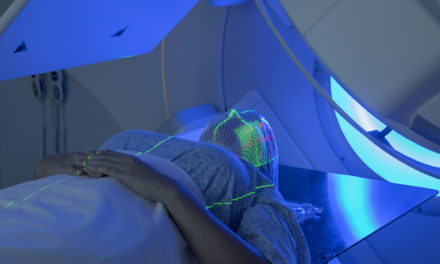When the ball dropped in January of this year, 322,800,000 people lived in the United States. An estimated 1.7 million of them will be diagnosed with cancer before the year ends, according to the American Cancer Society. That’s half a percent. But while that seems relatively small, when more than a million and a half people are diagnosed with something, it tends to impact us all. And when you add the 15 million people living in the U.S. who are considered cancer survivors, the circle grows even wider. It may touch a mother. A close friend. The principal at your daughter’s school, or even a child in her class. And that’s what accounts for the countless cancer foundations, walks, drives, charities, and support groups—we need to feel like we can act in the face of something so insidious.
In this two-part series, Real Woman takes on a 360-degree investigation into cancer, talking to the foremost doctors and experts in research, diagnostics, and treatment to uncover the latest medical advances helping us find cancer sooner and improve our prognoses. In this issue, we tackle the quickly growing field of genetic testing and find out what is available and how it can help map out a plan to monitor our health throughout our lives. Capital Health doctors will also break down screening and testing options for breast, brain, lung, prostate, gastroenterologic, and gynecologic cancer.
Our journey to the front lines can help you and your loved ones demystify cancer so doctors can discover it faster, target it more acutely, and give us the best weapons to fight it.
In Our Genes
While cancer treatments continue to become increasingly targeted and sophisticated, finding it in its earliest stages still gives doctors the biggest arsenal and patients the best chance at beating it. To that end, the study of genetics is giving us a running start, enhancing our understanding of the kinds of mutations our cells are predisposed to. When we can anticipate the kinds of problems we might have, we are more likely to look in the right places, says Erica Linden, M.D., Medical Director, Medical Oncology at Capital Health. “Increasingly, genetic observations direct treatment decisions,” she says. “We can empower patients to impact their care.”
Genetic testing, which was cost prohibitive for many people until fairly recently, can provide patients with information that can help them make crucial decisions to mitigate risks in the here and now and throughout their lives. Prior to 2013, a company called Myriad Genetics held a patent on the genes associated with breast, uterine, and ovarian cancer, known as BRCA1 and BRCA2. That year, the Supreme Court ruled unanimously in Association for Molecular Pathology v. Myriad Genetics that genetic material is a product of nature and therefore not patent eligible. “That allowed more companies to enter the market, so the cost has definitely come down,” Dr. Linden says. “Today, to do comprehensive genetic testing is significantly less expensive than it used to be, and many insurance providers are covering the cost.”
But even if insurance doesn’t cover the total cost, Dr. Linden says it’s an investment in your health that could potentially save your life. “It’s so important to know your family history to guide doctors to determine what screenings are necessary and when,” she says.
In addition to a reduction in cost, the Supreme Court ruling spurred further progress and improvements in the genetic-testing arena. “Thirteen years ago it took 6 weeks to get a result,” says Rona Remstein, director of oncology services at Capital Health. “Now it’s down to 2. That time is crucial because people can use that information to make surgical or medical decisions.”
Understand Your Options
Genetic testing entered our collective consciousness in 2013 when actress Angelina Jolie publically announced she had a preventive double mastectomy after testing positive for a BRCA1 gene mutation, fearing the eventual development of breast or ovarian cancer, the disease that killed her mother at 57 years old.
“There’s a heightened awareness about the importance of genetic testing and the availability, especially with high-profile individuals like Angelina Jolie and her decision to get testing and get treatment prophylactically,” says Dr. Linden.
It’s important for patients to understand what is being tested and what information they will be receive. She cautions that gaining insight into the body’s genetic fingerprints can be informative and useful, but also frightening. “We have the ability to test upwards of 20 or 25 genes at the same time that have varying degrees of cancer associations, which are known as genetic panels,” Dr. Linden says. “With counseling and education, patients can decide how much information they want to learn.”
She encourages patients with a strong history for breast, ovarian, colon, and pancreatic cancers all in the same family to undergo genetic testing. Other red flags relating to family history include Askenazi Jewish descent, as well as early-onset (before 45), bilateral, male, or triple-negative breast cancer, which means the offending tumor is estrogen receptor-negative, progesterone receptor-negative and HER2-negative. “You want to prevent cancer or find it as early as possible,” Remstein says. “You don’t have to wait for destiny to take hold. You can act if you choose.”
Behind the Screens
Diagnosing cancer early plays a significant role in treating it. Here, Capital Health doctors provide the latest information and advances in identifying the problems as early as possible.
Breast Cancer Screening
Gold standard/latest advance: Mammography/3D Mammography
What you need to know: Widespread screening mammography began around 1990. Since then, 30 percent fewer women die from breast cancer. Mammography is the only imaging modality that has been proven to decrease death from breast cancer, so we suggest women begin annual screenings at 40 years old.
Since April 2015, Capital Health has been offering patients the option of 3D mammography. While 2D mammography typically takes x-rays of the patient’s breast from two angles, 3D mammography, also known as tomosynthesis, takes multiple images of the breast along an arc. A computer then assembles those images to produce clear and highly focused 3D images throughout the breast.
For women who have dense breasts, which means more glandular tissue as opposed to fatty tissue, I recommend 3D imaging because it makes it easier for us to see cancers. On the flip side, the literature has shown that the recall rate and the rate of false positives has decreased with the use of 3D mammography. From a patient’s standpoint, the 3D imaging just takes a few seconds longer than conventional 2D mammography and only requires a written request on the script from the doctor.
—Anne Moch, M.D., Capital Health radiologist specializing in breast imaging
Gastroenterologic Cancer Screening
Gold standard/latest advance: Colonoscopy/Stool DNA testing
What you need to know: Most often colonoscopies are performed to screen for and prevent colon cancers, which is the second-leading cause of cancer deaths in the United States. Colon cancer is very aggressive, so we want to do our best to catch it early. It’s equally prevalent in men and women, although the disease is more aggressive in African Americans.
For most people, we recommend getting screened every 10 years, starting at age 50. However, if there’s a colon polyp found, then it’s typically every 5 years. If a patient has a family history of colon cancer, then screenings should begin 10 years before the age of the onset of those cancers.
In a colonoscopy, we sedate the patient, and the doctor will insert a thin, flexible tube called a colonoscope into the rectum. The colonoscope is equipped with a small video camera to take pictures or video of the large intestine. It can be used to look at the entire colon and the lower part of the small intestine, or, in the case of a sigmoidoscopy, shows only the rectum and the lower part of the colon. Physicians can also remove or biopsy polyps during the examination, which makes it an incredibly useful tool.
Stool DNA testing is a new type of non-invasive test that looks for gene changes that are sometimes found in colon cancer cells. Most commercial insurances aren’t paying for it yet, but it can be used for patients who are eligible for screening but don’t want to go for an invasive test like a colonoscopy. SEPT9 DNA blood tests are also available and have low sensitivity (48 percent) for detecting colorectal cancer. However, I still recommend a colonoscopy because if something is found in the screening, a patient would still need to come in to have the abnormality examined or the polyp removed.
—Jyoti Bhatia, M.D., specialist in gastroenterology at Mercer Gastroenterology
Lung Cancer Screening
Gold standard/latest advance: Low-dose CT (cat) scan
What you need to know: Despite the fact that lung cancer is the leading cause of cancer deaths in women and men, screening for lung cancer is relatively new—the U.S. Preventative Task Force first recommended it in late 2013, and most commercial insurance companies recently started covering it.
Your doctor will write a prescription for a low-dose CT scan of the chest, which is simple and only takes a few minutes. It uses a very low dose of radiation, similar to what’s used in a mammogram for breast cancer screening. It’s important to know that the CT scan is very sensitive, and most of what is found is not cancer, so we may go to biopsy, try some other imaging like a PET scan, or perform a bronchoscopy, which scopes into the lung.
Starting at age 55, we recommend annual screenings for smokers or former smokers who have quit within the last 15 years. Early detection is great because the highest rate of cures is early-stage cancer. But prevention is better. Screening doesn’t replace stopping smoking. The best thing people can do to prevent lung cancer is not to smoke.
—Scott Kindsfather, M.D., Medical Director of Medical Oncology at Capital Health
Pancreatic Cancer Screening
Gold standard/latest advance: Endoscopic ultrasound
What you need to know: There’s always research going on to try to increase our knowledge around pancreatic cancer. We are trying to figure out who is most at risk for developing this type of cancer and then screening for it. While there’s no long-term data to show that screening for pancreatic cancer decreases death, people who do get screened with endoscopic ultrasound tend to live longer. Since we know the earlier you catch it the better the survival, if we can pick up cancerous lesions earlier, people will have better outcomes.
Capital Health has been offering endoscopic ultrasounds for about 5 years, and it’s become the gold standard for the early detection of pancreas cancer. By passing
the endoscope into the top part of the GI tract, we get great views of the pancreas, and it allows us to see early lesions. It’s a technology that very few hospitals offer, so we are the busiest center in Central New Jersey for endoscopic ultrasound.
Capital Health follows the screening strategy of identifying people by family and personal history. Regular screenings are a good idea for patients who have two or more first-degree relatives with pancreatic cancer diagnosed at any age; two or more second-degree relatives with pancreatic cancer, at least one of whom was diagnosed under the age of 50; One first-degree relative diagnosed under the age of 50; History of a genetic syndrome associated with pancreatic cancer; and patients with the onset of diabetes over the age of 50.
—Jason Rogart, M.D. Director, Interventional Gastroenterology and Therapeutic Endoscopy, Capital Health










